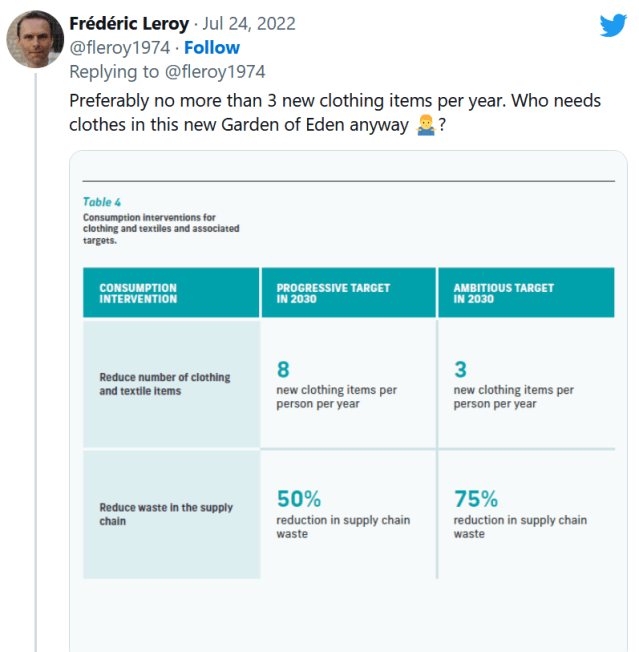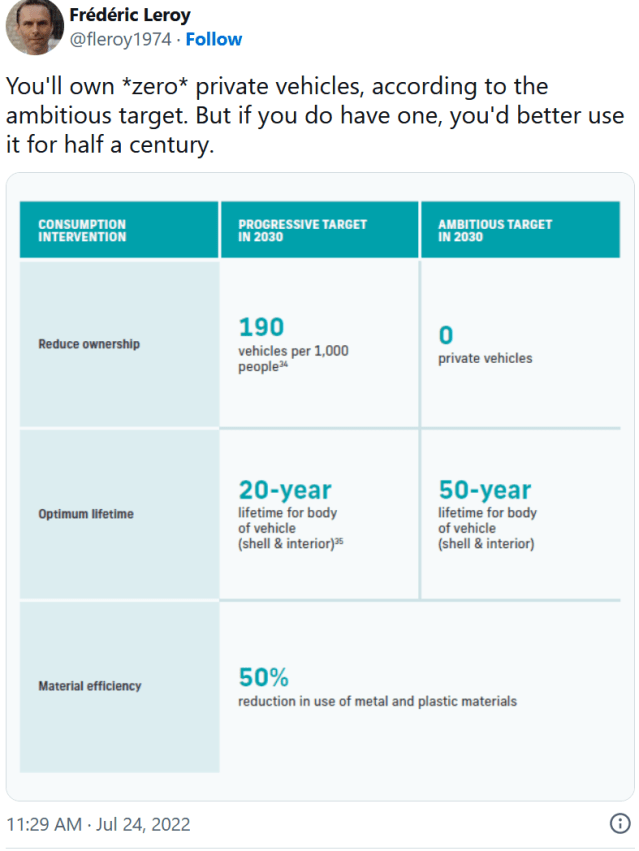Climate Change Lockdowns disguised as “15 Minute Cities” are being introduced under the UN Agenda 2030 Directive & WEF Great Reset plan
Your Government is pushing ahead with plans to bring 15-minute cities to a location near you. They are a brainchild of the UNs Agenda 2030, and are in effect Climate Change lockdowns.
And once combined with a digital ID, a carbon credit score and a programmable central bank digital currency (CBDC) token, you’ve got the perfect recipe for creating a digital open-air prison.
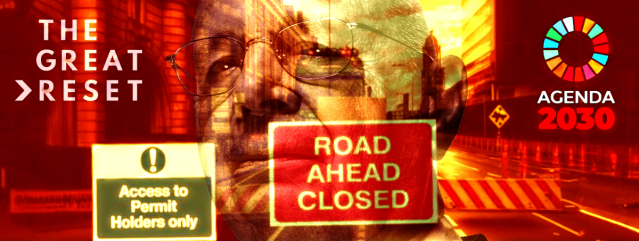
Let’s not lose touch…Your Government and Big Tech are actively trying to censor the information reported by The Exposé to serve their own needs. Subscribe now to make sure you receive the latest uncensored news in your inbox…
By Sikh For Truth – Editor of Truth Talk UK & Regular Contributor to The Expose
Canterbury’s council bosses have drawn up a radical plan to tackle congestion that will split the city into five zones and ban residents from driving directly between them.
During the Middle Ages, Canterbury, a cathedral city in southeast England, was a pilgrimage site. With cobbled streets and timber-framed houses, ancient Roman walls encircle its medieval centre. It has a population of 43432.
In Canterbury’s ‘Local Plan to 2045’, the council proposes splitting the city into five districts, with drivers unable to cross between districts by private car – even if they live there.
Within the document is the idea of 15-minute neighbourhoods: For example – “Community infrastructure provided as part of upcoming developments should be accessible to new and existing residents – preferably within 15 minutes walking time and always within 15 minutes.” – They say this is about ’living locally’.
Those who break the rules will face fines (possibly the same as Oxford’s £70) enforced by number-plate recognition cameras and won’t be able to make simple journeys around the city. According to Page 14 of the draft Canterbury District Local Plan to 2045 – there will be “Implementation of an ANPR-based sectoring system and modal filters to limit cross-city trips.”
They will instead have to drive out of their ‘neighbourhood’ and onto a new bypass – essentially a much larger outer ring road – before re-entering their chosen zone. Short, direct journeys across the city – like to supermarkets, retail parks or GP surgeries – will be banned to encourage residents to walk, cycle or use public transportation.
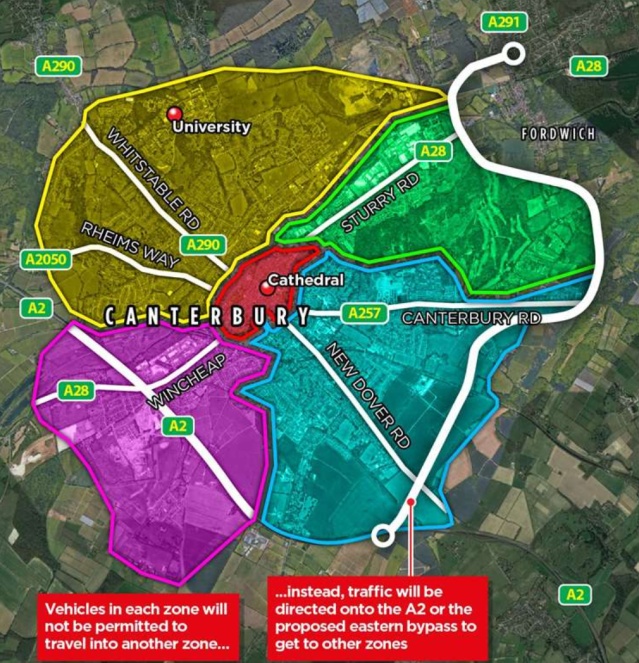
Designed after a system used in the Belgian city of Ghent, the proposal is part of the council’s revised draft Local Plan. In the five zones, major roads will be closed, forcing drivers to ditch their cars or use the bypass. ANPR cameras will be at the entry and exit points of each zone so drivers can’t move between neighbourhoods.
Ben Fitter-Harding Conservative leader of Canterbury City Council, an advocate for sustainable development who has worked on the Canterbury Circulation Plan for two years, is confident the major road network transformation will turn out well. He said:
“For residents within the five zones, they can access the facilities within their neighbourhood by car if they need to. But if you want to travel to a different neighbourhood, the most convenient way to do that will be by walking, cycling or using public transport.”
“It would likely be a frictionless system, so there would be cameras.”
“We will fine people who decide ‘I’m planning to drive across the city, I don’t care’.
“If you drive between neighbourhoods you will receive a fine.”
He continued: “The amenities and services that you would need are all in your neighbourhood. You wouldn’t have all the rat running, so it’d be fantastic if we could achieve it.”
He also said: “In 20 years’ time, you’re likely going to have your groceries delivered or you’re planning to go to a different supermarket or a new local shop in your own neighbourhood.”
However, Lib Dem councillor Nick Eden-Green says the scheme raises some “serious questions”. “When I visit friends I don’t consider which zone they are living in. It’s “frankly ridiculous – you’re creating ghettos where people are locked in and can’t travel elsewhere.”
It gets even more difficult for outsiders too: Visitors from other Kent districts and boroughs, or tourists, can’t park within the city walls. As a result, most parking lots will be made redundant. Tourists and visitors can park in one of four zones around the city centre. From each zone, visitors will be able to ride the park and ride into the city.
What is a ‘15-minute city’?
This is all being done outside of the normal democratic process, for instance in Oxford where similar plans are afoot. Traffic filters will divide the city into “15-minute” neighbourhoods. Duncan Enright, Oxfordshire County Council’s cabinet member for travel and development strategy, said the filters would turn Oxford into “a 15-minute city” with local services within a small walking radius.
Mr Enright said: “It is about making sure you have the community centre which has all of those essential needs, the bottle of milk, pharmacy, GP, schools which you need to have a 15-minute neighbourhood.”
He insisted the controversial plans would move ahead whether people liked it or not. And it’s the same story in London. TfL consulted thousands of people who overwhelmingly said no to the ULEZ expansion. 60% of respondents opposed the expansion, but it’s going forward anyway.
Nigel Farage has called out the Canterbury plans, claiming “climate change lockdowns are coming.”
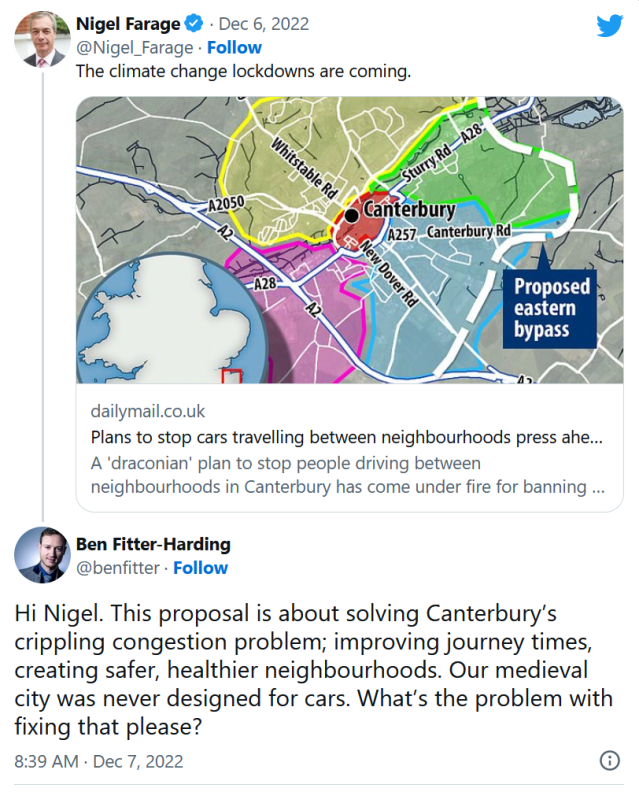
While Ben Fitter-Harding blasted the social media chatter and told people not to “spread misinformation.”
This is also part of the UN Sustainable Development Goals for cities and human settlements. As part of the 2030 Agenda, Sustainable Development Goal 11, “Make cities and human settlements inclusive, safe, resilient, and sustainable”.
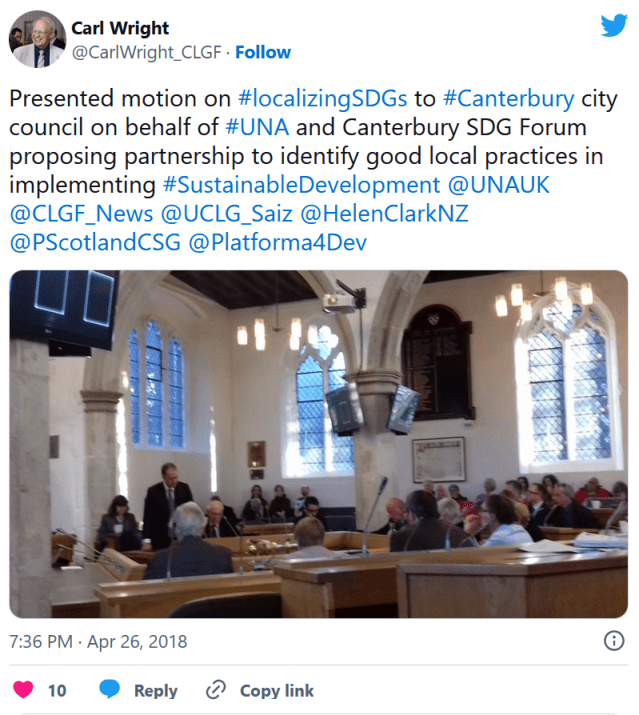
Agenda 2030 is being pushed by local leaders.
n London, surveillance technology is expanding to control our car trips. London’s ULEZ zones will be expanded to cover most, if not all, of the city. This means you will have to pay £12.50 a day for the privilege of getting into your car, no matter how short or long the trip is. There will be a 200 million pound ANPR camera network to fine drivers when they do.
The plans for Canterbury seem to be derived from a plan which was proposed in 2020 labelled “The 15 minute city” and is part of the overall Net Zero 2030 agenda.
Under the plan described by Councillor Val Kenny: “The covid-19 crisis has torn a hole in city budgets decimating urban economies” and thus to build back better they recommended: That “all residents will live in 15 minute cities.”
The decentralisation of services has become known as the 15-minute city. This is where you can do your job, get to school, see your doctor and be entertained all within a 15-minute radius of where you live. Promoting active travel and reducing car use are key to achieving the 15-minute vision.
Also from the 2021 Canterbury Climate Action Partnership document under the section sustainable transport – it states the following: To “Encourage CCC to set up a low emissions zone(s) and tackle air quality hotspots; ensure that all council vehicles are ultra-low emission/electric by 2030;”
This plan is the same as London’s for the establishment of low-emission zones.
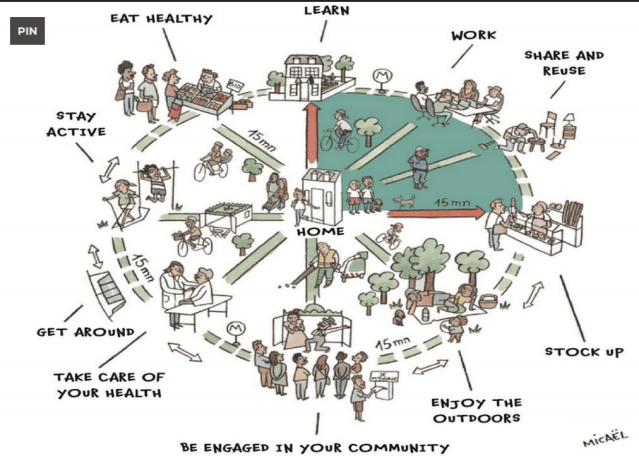
“As climate change and global conflict cause shocks and stresses at faster intervals and increased severity, the 15-minute city will become even more critical.” – World Economic Forum (WEF) – March 15, 2022.
The 15 minute city concept is also being pushed by our esteemed friends at the World Economic Forum: In the article: The surprising stickiness of the “15-minute city”
They explain what it means: The “15-minute city” concept—which implies having all necessary amenities within a short walk, bike ride, or public transit trip from one’s home—has demonstrated stickiness not just as an idea, but as a powerful tool for action – from Paris to Seoul, from Bogotá to Houston. It was coined in 2016 by Sorbonne professor Carlos Moreno, who won an Obel Award in 2021.”
According to Delloite: “The re-zoning model will gain further traction in the future, boosted during the COVID-19 pandemic by new ways of working that require less transport. With climate change as a major global concern, C40 in its C40 Mayors’ Agenda for a Green and Just Recovery has recommended this model for cities worldwide. This is because its pedestrianisation approach contributes to a reduction in greenhouse gas emissions and supports environmental sustainability. Most notably, the ‘15-minute city’ was popularised in 2019 by Paris and is a flagship initiative in the current programme for the city.”
In many other cities around the UK and the world, this plan is being replicated. Oxford City Council is working on the same thing.
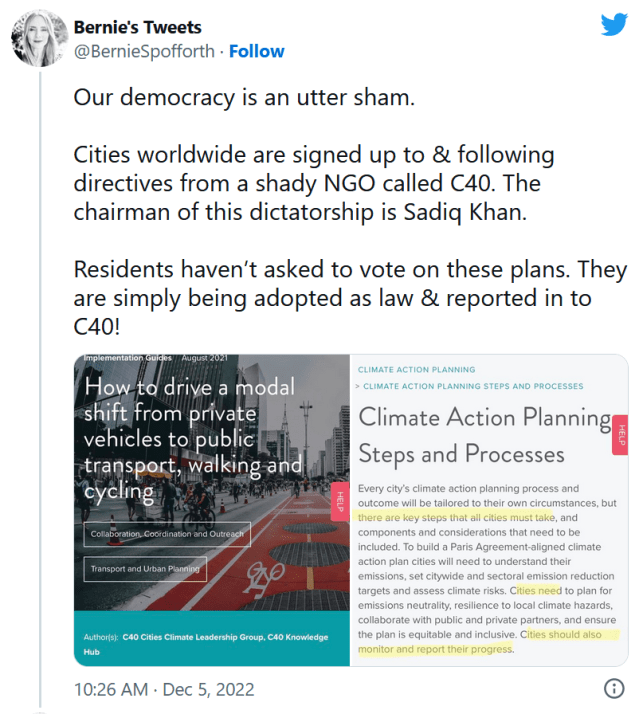
C40:
There are 97 cities in the C40 Cities Climate Leadership Group, which represents one twelfth of the world’s population and one quarter of the world’s economy. The C40 was created in October 2005 when London Mayor Ken Livingstone convened representatives from 18 megacities to reduce climate pollution together. With the help of former US President Bill Clinton, Mayor Livingstone and the Clinton Climate Initiative (CCI) strengthened both organizations in 2006, expanding the network to 40 cities and helping cities deliver projects and project management to reduce emissions.
It was C40 that introduced the 15-minute city concept. It’s a network of mayors from nearly 100 world-leading cities working together to tackle climate change – right now it’s headed by London Mayor Sadiq Khan.
It’s understood that the COVID-19 pandemic played a significant role in accelerating this shift to 15-minute cities and according to Lisa Chamberlain of the World Economic Forum, “the 15-minute city grew from a “nice-to-have” to a rallying cry.”
Global organizations, such as the C40 Cities Climate Leadership Group, took notice too. In July 2020, they published a framework for cities to “build back better”, and the 15-minute city concept was at the heart of it.
And who funds C40.org? It’s a partnership with many companies including the Open Society Foundations, founded in 1993 by George Soros. Other partners include the Wellcome Trust, the Clinton Foundation and the World Bank.
In a Twitter thread posted by Frédéric Leroy, he outlined some of the chilling aspects of these so-called C40 Cities. Based on his research, you will own zero private vehicles under the ambitious goal.
He also reports that there are some really powerful people and organizations behind the C40 initiative. Michael Bloomberg is the C40 Board president, and Sadiq Khan is the current chair. C40 is also part of the Global Commons Alliance, a public-private partnership with PlanForThePlanet, the World Economic Forum, Rockefeller Foundation, WBCSD, EAT, Club of Rome, WWF, WRI etc.
Birmingham, Ipswich, Oxford, Manchester, London, Glasgow and Edinburgh are other 15 minute cities:
“15-minute city” – straight out of Agenda 2030. Combine a digital ID with a carbon credit score and their programmable CBDC token and you’ve got the makings of a digital open air prison.
As usual, ordinary people will pay for the 15-minute city. Particularly urban car owners and families who commute across town to visit relatives or friends.
The plan seems to limit car ownership. If you combine these plans with plans to ban petrol and diesel cars by 2030, it all starts to make sense. It is part of a coercive drive to keep motorists on their toes, posing as a revival of Britain’s green and pleasant land. Homes with cars will have to count how often they use them and there will probably be more surveillance, permits, and penalties coming.
No matter what is happening, it is being done outside of democracy, by climate change companies and climate zealots. This is in the name of saving the planet from net zero destruction.
Of course in order to save the day we have to give up more and more of our privacy and liberties or be fined. The classic behavioural nudge. No, it’s not a lockdown in the normal sense, but it is more authoritarian for sure. This is where we must think about our own daily routines and make sacrifices for the supposed global good. Decarbonising the west may be a way of deindustrialising the west.
This article has been archived for your research. The original version from The Exposé can be found here.

